
Inside Josh Lilley Gallery’s stand at Frieze New York, a painting barely larger than an album cover hangs on an otherwise empty white wall. The work, by the 30-year-old Berlin-based artist Tom Anholt, sold to the first client who walked into the booth during the fair’s VIP preview for $6,000. That’s $2,000 less than it cost the gallery to rent the wall it’s hanging on, according to the gallery director’s calculations.
The economics of art fairs have not benefited small and mid-size dealers for some time. But now, there’s one big difference: People are willing to talk about it. “It used to be that people were anxious about speaking out,” says the dealer Cristin Tierney. “Now, people are realizing nothing is going to change if you don’t say something.”
The limitations and contradictions of the fair system—and the challenges facing smaller galleries more broadly—was a frequent topic of conversation during the first of two VIP preview days at Frieze New York on Wednesday. (Well, that and the rising temperatures inside the newly redesigned tent on Randall’s Island. “I know one limitation of this fair system: air conditioning,” one dealer quipped.)
The fair came on the heels of David Zwirner’s offhand proposal at the recent New York Times arts leaders network conference that larger galleries pay extra to participate in art fairs as a way to subsidize small and midsize dealers. And while not everyone at Frieze New York believed that the idea was feasible or enough to fix the problem, most were in agreement that something needs to give.
Walking a Tightrope
William Pym of Josh Lilley Gallery noted that a fair like Frieze, which can cost six figures to do, is “not the place to take risks.” But at the same time, galleries feel pressure to present something daring in order to project confidence and stand out from the pack. (In his case, the $2,000 discrepancy vis à vis the wall was made up by several other sales of larger works by the same artist, which were listed between $20,000 to $30,000.) “You have to walk this tightrope—you have to be careful and carefree at the same time,” he said.
Dealers, Tierney agrees, feel pressure to continue to participate in certain fairs in order to maintain a gallery’s status in the broader ecosystem—even when it might not make sense financially. “Perception really seems to matter when it comes to how your gallery is categorized,” she said.
David Hockney’s work at Pace’s Frieze New York booth. Photographer: Tom Barratt, courtesy Pace Gallery.
This precarious state of affairs is a far cry from just over a decade ago, when the market was characterized by what Gavin Brown called a “mindless frothiness.” At Art Basel Miami Beach in 2006, Brown presented a single work at his stand: a crushed Camel cigarette pack moving across the floor like a tumbleweed by the artist Urs Fischer. (It sold for $160,000 at the time.)
“A piece like that would almost be a little bit too cocky now,” Brown said at Frieze. “And it was cocky at the time, but there is not much room for cocky poetry anymore.” At Frieze New York, he installed six photographic works by Arthur Jafa priced between $40,000 and $45,000. Comparing the present moment to his memorable splash in Miami over a decade ago, he said, “I think if we were in a hot tub then, we’re on a treadmill now.” By the end of the first day, the gallery had sold several Jafa works.

Other galleries had made a sprinkling of sales, too, but most activity hovered below $200,000, according to the dealers and fair representatives artnet News consulted. Lehmann Maupin sold five grid-like oil paintings by McArthur Binion for prices listed between $50,000 and $175,000. Marian Goodman sold William Kentridge’s bronze Shadow Figure II (2016), priced at $95,000. Pace sold more than 20 cheerful, modestly sized iPad drawings by David Hockney for $26,000 each. David Kordansky nearly sold out of dark, cinematic photographs by Thorbjørn Rødland for between $14,000 and $28,000. And Parrasch Heijnen sold half a dozen craggy, charming ceramics by Julia Haft-Candell for between $5,000 and $6,000.
Granted, there were a few bigger-ticket items: Thaddaeus Ropac sold a tarnished bronze panel by Robert Rauschenberg that weighs nearly 66 pounds for $725,000 and several large, recent paintings by Georg Baselitz priced between €500,000 and €700,000. 303 Gallery sold a painting by Mary Heilmann for $275,000, among other works. But several dealers who reported strong sales acknowledged they had pre-sold marquee pieces before the doors opened.
Meanwhile, few dealers brought art priced at more than $1 million (either because they determined top-flight material would perform better at the tony TEFAF New York Spring fair, which opens today, or because they felt it was not the right moment to offer it), while six-figure deals were taking longer to close than they might have several years ago.
Crack in the Foundation
Several dealers blamed the restrained commerce on the humidity and heat in the tent, which caused some collectors to leave early. “Probably millions of dollars were lost because Frieze didn’t want to spend an additional few thousand to turn the AC on a few hours earlier,” one dealer complained.
But the chatter pointed to a crack in the market’s foundation that goes deeper than the weather.
“The model of showing up to a fair and putting a sign up that says ‘we’re open’ doesn’t work anymore,” said Nick Koenigsknecht of the Berlin-based gallery Peres Projects. Not going, he added, isn’t an option—artists expect the gallery to participate in fairs, and they remain an important way for single-venue businesses like his to gain exposure to new audiences. “For us it would be like saying, ‘Let’s go back to a time when Facebook didn’t exist.’”

Nevertheless, just as expectations of Facebook are changing following recent scandals, expectations of art fairs are shifting, too. “In the old days, the responsibility of an art fair was to make sure an audience was there,” Tony Karman, the director of the EXPO Chicago fair, said. “Now, I don’t think that’s enough. There’s more we need to do.”
Frieze seems to agree. This year, the fair reduced the booth price for the young-dealer-focused Frame section by 20 percent (booths now start at $8,000, 50 percent less per square foot than the main section). Spaces in the Focus section, also for young galleries, were 30 percent less than the main section. For the second year in a row, Frieze has flown in curators to attend a closed-door conference—and attend the fair, too. In a statement, a spokesperson said the fair “is already undertaking” a conversation with exhibitors about how to address “operational, financial, and structural challenges for galleries.”
Indeed, many remain skeptical that anything as simple as an “art-fair tax” or tweaks to fair programming could solve the systemic problems facing the market. Factors large and small contribute to an uneven playing field, they say, citing plummeting foot traffic to galleries, the fact that collectors are asking emerging dealers for heftier discounts than they used to, and the reality that large galleries are still invited to participate in some fledgling fairs for free to lend cachet. (Of fairs’ decision to fly in curators, one dealer was saturnine: “They will probably just end up talking to the same people they always do.”)
“Art fairs cost a fortune, but that’s only one part of your overhead—rent, shipping, and storage costs are all going up,” said Cristin Tierney, whose booth presented a suite of pastel-hued paintings from the 1960s by Helen Lundeberg priced between $55,000 and $80,000. “The most common thing I have heard from colleagues in the last six months is, ‘I’m tired.’ Everybody has said, ‘Put on a brave face.’ But it isn’t working anymore. So maybe now we can figure out what works.”

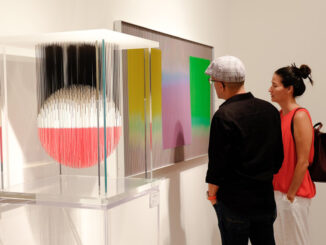
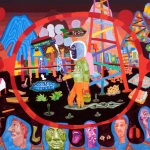
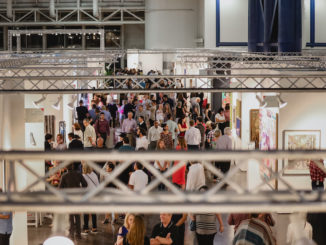
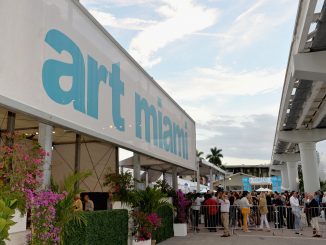

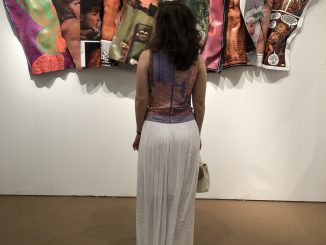
Be the first to comment